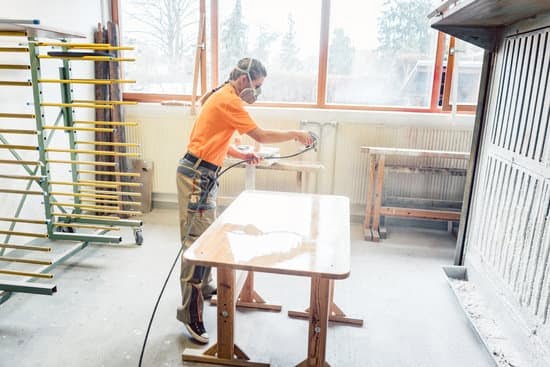When it comes to woodworking, one of the most essential elements is choosing the right screw. The selection of screws plays a crucial role in determining the strength, integrity, and overall success of your woodworking projects.
Using the wrong screw size, material, or head type can lead to disastrous results, compromising the durability and stability of your creations. That’s why we’ve put together this comprehensive guide to help you navigate through the vast array of options and make informed decisions when it comes to selecting screws for your woodworking endeavors.
In this blog post, we will delve into different aspects of wood screws, including types, sizes, materials, and head types. We will discuss traditional screws, drywall screws, and specialized screws designed for specific applications. With an understanding of these factors, you’ll have a solid foundation for choosing the perfect screw that meets your project requirements.
Whether you are a seasoned woodworker or just starting out in this craft, our aim is to provide you with valuable information that will make your woodworking journey smoother and more successful. By considering factors such as screw size in relation to wood thickness, different screw materials’ advantages and disadvantages, and various head types’ pros and cons in relation to project requirements, you can ensure that every screw you use contributes to the strength and longevity of your woodworking creations.
Stay tuned as we walk you through everything you need to know about choosing the right screw for woodworking projects. Armed with this knowledge, you’ll be well-equipped to tackle any woodworking endeavor with confidence and achieve outstanding results. Let’s dive in.
Understanding Different Types of Wood Screws
Wood screws are an essential component in woodworking projects, as they play a crucial role in joining pieces of wood together securely. However, with the wide variety of wood screws available in the market, it can be overwhelming to choose the right one for your project. In this section, we will provide a comprehensive understanding of the different types of wood screws and their features.
Traditional Screws
Traditional wood screws are a popular choice for general woodworking projects. They typically have a sharp point and traditional slotted or Phillips head design. These screws are available in various sizes, lengths, and gauges to suit different applications. The versatility of traditional screws makes them suitable for both indoor and outdoor woodworking projects.
Drywall Screws
While drywall screws are primarily designed for securing drywall panels to metal studs or wooden structures, they can also be used for certain woodworking applications. Drywall screws have a coarse thread that provides excellent grip and grip strength when driven into wood. However, they may not be ideal for load-bearing joints as they are susceptible to snapping.
Specialized Screws
In addition to traditional and drywall screws, there is a wide range of specialized wood screws available for specific woodworking needs. Pocket hole screws, for example, feature a self-tapping design that creates pocket holes without the need for pilot holes. This type of screw is commonly used in joinery and cabinetry projects.
Deck screws are specifically designed to withstand outdoor elements and resist corrosion. These screws have special coatings that protect against moisture damage and rusting. Cabinet installation often requires cabinet screws, which have a thin shank diameter to minimize splitting in delicate materials like particleboard and plywood.
Understanding the different types of wood screws is crucial in choosing the right one for your woodworking project. Consider factors such as material compatibility, load-bearing requirements, and environmental conditions when making your selection. By selecting the appropriate screws, you can ensure the strength, integrity, and longevity of your woodworking creations.
Choosing the Right Screw Size for Woodworking Projects
Choosing the right screw size is essential when it comes to woodworking projects. Using the wrong screw size can compromise the strength and integrity of your project, leading to instability and potential damage over time. In this section, we will discuss the significance of screw size in relation to the thickness of the wood, provide a guide on selecting the appropriate screw length and gauge for various applications, and highlight the risks of using the wrong screw size.
The Significance of Screw Size
Screw size refers to both length and gauge. The length of a screw determines how securely it holds pieces of wood together, while the gauge refers to its diameter. It is crucial to choose screws that are long enough to penetrate both pieces of wood being joined without protruding beyond them. On the other hand, using screws that are too short can result in weak connections that may fail under pressure.
Selecting the Appropriate Screw Length and Gauge
When selecting the screw length, consider the thickness of the wood you are working with. As a general rule, add one inch to account for penetration into one piece of wood and half an inch for each additional piece being joined. For example, if you are fastening two pieces of 1-inch thick wood together, a 2.5-inch long screw would be suitable.
Furthermore, choosing the correct gauge is crucial for achieving strong connections. The higher the gauge number (such as 6, 8 or 10), the thinner and smaller diameter of the screw. Thicker gauges provide more holding power but may require pre-drilling pilot holes to prevent splitting.
Risks of Using Incorrect Screw Sizes
Using incorrect screw sizes can lead to several issues in woodworking projects. If screws are too short or have insufficient threads engaging with the material, they may fail to hold securely or strip out over time. This could result in joints loosening or breaking, compromising the overall strength of the project. Conversely, using screws that are too long can cause damage to the wood surface or protrude, creating an unattractive appearance.
Choosing the right screw size is crucial for ensuring the strength and stability of your woodworking projects. By considering the thickness of the wood and selecting appropriate lengths and gauges, you can achieve secure connections that will withstand time and usage. Taking the time to choose wisely will not only enhance the structural integrity of your projects but also contribute to their visual appeal.
Exploring the Different Materials of Wood Screws
Wood screws are available in various materials, each with its own advantages and disadvantages. It is important to choose the right material based on the specific woodworking project to ensure the durability and longevity of the joint. In this section, we will explore the different materials of wood screws and provide insights into their suitability for specific woodworking applications.
One common material used for wood screws is stainless steel. Stainless steel screws are known for their exceptional strength, corrosion resistance, and durability. They are ideal for outdoor projects or applications where moisture or exposure to elements is a concern. The chromium content in stainless steel provides excellent rust resistance, making them suitable for use in humid environments or in contact with treated lumber.
Another commonly used material is brass. Brass screws offer a unique aesthetic appeal with their golden hue, making them popular in decorative woodworking projects. They have good corrosion resistance but may not be as strong as stainless steel screws. Brass screws are often used in furniture making or applications where appearance plays a significant role.
Coated screws are also available, with options such as zinc-plated or galvanized finishes. These coatings provide extra protection against rust and corrosion, making them suitable for both indoor and outdoor applications. Zinc-plated screws are cost-effective options for general woodworking projects, while galvanized screws offer enhanced durability and weather resistance, making them ideal for decks, fences, and other outdoor structures.
| Material | Advantages | Disadvantages | Suitable Applications |
|---|---|---|---|
| Stainless Steel | – Exceptional strength
| – Higher cost
| – Outdoor projects
|
| Brass | – Aesthetic appeal
| – Less strong than stainless steel
| – Furniture making
|
| Coated (Zinc-plated/Galvanized) | – Cost-effective options
| – Coatings may wear off over time | – General woodworking projects
|
Remember, selecting the right screw material is crucial for the longevity and performance of your woodworking project. Consider the environmental factors, desired appearance, and budget to make an informed decision on the most suitable wood screw material.
Examining Head Types
When it comes to choosing the right screw for woodworking projects, one important factor to consider is the type of screw head. The head of a screw plays a crucial role in determining its functionality and appearance in the finished project. In this section, we will explore the various screw head types and discuss their pros and cons in relation to different woodworking scenarios.
Firstly, let’s take a look at flat head screws. Flat head screws have a countersunk shape with a flat top surface that sits flush with the material being fastened. They are commonly used when you need a screw that can be easily concealed or covered with wood putty or filler.
Flat head screws provide a clean, neat finish and are often used in applications where the appearance of the screw is important. However, it is worth noting that flat head screws may not be as strong as other head types and may require careful pre-drilling and countersinking to prevent splitting.
Another popular option for woodworking projects is round head screws. Round head screws have a dome-shaped top surface that protrudes slightly from the material being fastened. They are known for their versatility and suitable for both structural and decorative purposes. Round heads provide greater holding power compared to flat heads because they have more surface area in contact with the material. These screws are often used in applications where strength and stability are important factors.
Lastly, pan head screws offer distinct advantages in certain woodworking scenarios. Pan heads have a slightly rounded top surface with straight sides that extend outward before tapering down towards the shaft of the screw. This design prevents over-tightening and provides additional bearing surface against the material being fastened. Pan heads are particularly useful when working with softer woods or when there is limited access to tighten screws from above.
When choosing between these different screw head types, it is crucial to consider your specific woodworking project requirements. Factors such as the desired visual appearance, holding power, and ease of installation all play a role in determining the best choice for your project. By carefully evaluating these factors and selecting the appropriate screw head type, you can ensure both the functionality and aesthetic appeal of your finished woodworking project.
Specialized Wood Screws for Specific Applications
Woodworkers often encounter unique woodworking needs that require specialized screws. These specialized wood screws are designed to meet the specific requirements of certain applications and can greatly enhance the quality and efficiency of your projects. In this section, we will shed light on some commonly used specialized screws in woodworking: pocket hole screws, deck screws, and cabinet screws.
Pocket hole screws are widely used in joinery and furniture making due to their ability to create strong joints without the need for complicated joinery techniques. These screws have a self-drilling tip and coarse threads designed to securely hold two pieces of wood together at an angle.
Pocket hole screws are typically used with pocket hole jigs, which allow for precise drilling and placement of the screw holes. The advantage of using pocket hole screws is the ease of assembly it offers, as well as its strength and stability.
For outdoor projects like building decks or fences, deck screws are the go-to choice. Deck screws are specifically engineered to withstand outdoor conditions and resist corrosion caused by exposure to moisture and weather. They have a coated or galvanized finish that provides protection against rusting, ensuring the longevity of your outdoor structures. Deck screws often feature a type 17 auger point for easy penetration into wood materials without splitting.
Cabinet installation requires specific types of fasteners, and cabinet screws are designed for this purpose. These specialized wood screws have a thin shank diameter that reduces the risk of splitting delicate materials like plywood or particleboard when securing cabinets or other furniture pieces together. Cabinet screws also usually feature a washer head or flat head design, which provides ample surface area for gripping onto decorative hardware or mounting plates.
When using specialized wood screws, it is important to consider factors such as thread design, corrosion resistance, and compatibility with your woodworking materials. Always refer to manufacturer guidelines and recommendations for selecting the appropriate screw type for your specific woodworking application.
By utilizing these specialized wood screws tailored to specific tasks, you can ensure the highest quality and reliability in your woodworking projects. Whether it’s creating strong joints with pocket hole screws, building durable outdoor structures with deck screws, or securely installing cabinets with cabinet screws, having access to these specialized fasteners will enable you to take your woodworking skills to the next level.
Essential Tips for Using Wood Screws
Wood screws are an essential component of woodworking projects, and knowing how to use them effectively is crucial for achieving sturdy and reliable results. Here are some essential tips to keep in mind when working with wood screws:
- Pre-drill Holes: To prevent splitting or cracking the wood, it’s important to pre-drill pilot holes before driving in the screws. The diameter of the pilot hole should be slightly smaller than the screw’s shaft, allowing it to grip the wood firmly without causing damage.
- Counter-sink Screws: In order to achieve a neat and professional-looking finish, consider counter-sinking the screws. This involves drilling a larger hole that accommodates the head of the screw so that it sits flush or slightly below the surface of the wood. Once countersunk, you can fill the hole with a matching wood putty if desired.
- Maintain Proper Torque: It’s important to drive in wood screws with just the right amount of torque. Applying excessive force can cause the screw to strip or break, while insufficient torque may result in loose connections. Consider using a torque driver or an adjustable setting on your power drill to ensure consistent and appropriate torque when fastening wood screws.
Additionally, there are certain precautions you should take when using wood screws:
- Avoid Over-Tightening: Over-tightening the screws can lead to damaging both the screw and the surrounding wood. To avoid this, stop tightening once you feel resistance or when the screw head is flush with or slightly below the surface of the material.
- Select Appropriate Screw Lengths and Gauges: Choosing the correct screw length and gauge depends on factors such as thickness of the wood, load-bearing requirements, and type of joint being created. Using screws that are too short or thin may not provide enough grip, compromising the strength and durability of your project.
- Use Screw Lubricant: When working with hardwood or dense woods, applying a lubricant to the screws can make driving them easier. This reduces the risk of damaging the screw or wood due to excessive friction or binding.
By following these essential tips, you can ensure that your wood screws are used effectively and safely in your woodworking projects. Remember to always consider the specific requirements of your project and choose the appropriate screws accordingly. With proper technique and attention to detail, your woodworking endeavors are sure to be successful.
Review of Top Wood Screws Brands in the Market
When it comes to woodworking, using high-quality screws is crucial for ensuring a successful and durable project. With so many brands in the market, it can be overwhelming to choose the right one. In this section, we will review some of the top wood screw brands that consistently deliver quality products.
- FastenMaster: FastenMaster is a well-known brand that offers a wide range of wood screws suitable for various woodworking applications. Their screws are known for their strength, durability, and ease of use. One of their popular products is the HeadLok screw, which features a large washer head that provides excellent holding power.
- GRK Fasteners: GRK Fasteners is another reputable brand that specializes in wood-to-wood fasteners. They offer an extensive selection of screws with different features to meet specific woodworking needs. Their R4 Multi-Purpose Screw is highly regarded by professionals and DIYers alike for its versatility and exceptional performance.
- Spax: Spax is a trusted brand known for its advanced technology and high-quality screws. Their patented MULTIhead allows for smooth countersinking without damaging the wood surface. The T-Star Plus drive system ensures easy installation and prevents stripping or cam-out.
- McFeely’s: McFeely’s has been serving woodworkers since 1976 with their reliable wood screws and fasteners. They offer a comprehensive range of options, including traditional slotted screws, combo-drive screws, and specialty screws like pocket hole screws. McFeely’s prides itself on providing excellent customer service along with their top-notch products.
- Kreg: When it comes to pocket hole joinery, Kreg is a go-to brand for many woodworkers. They specialize in pocket hole screws that are designed to create strong joints efficiently. Kreg’s self-tapping feature eliminates the need for pre-drilling holes, making them a time-saving option for woodworking projects.
Each of these wood screw brands has its own unique features and specialties. It’s recommended to consider your specific project requirements and choose a brand that aligns with those needs. Reading customer reviews and ratings can also provide valuable insights into the performance and reliability of different brands.
When investing in wood screws, it’s important to prioritize quality over price. Choosing reputable brands will ensure that you’re getting screws that are built to last and capable of withstanding the demands of your woodworking projects.
Conclusion
In conclusion, choosing the right screw is crucial for woodworking projects of all kinds. Throughout this comprehensive guide, we have explored the different types of wood screws, their sizes, materials, and head types. By understanding these factors and considering your project requirements, you can ensure the strength and integrity of your woodworking endeavors.
When it comes to selecting the perfect screw size, it is essential to take into account the thickness of the wood. Using a screw that is too short or too long can compromise the overall strength of your project. By following the recommended guidelines and considering gauge and length, you can avoid risks such as splitting or weakened structural integrity.
Furthermore, the material of the screw plays a significant role in its durability and resistance to corrosion. Stainless steel, brass, and coated screws each have their advantages and disadvantages in different woodworking scenarios. By carefully choosing the right material for your specific project needs, you can ensure longevity and optimal performance.
Additionally, head type selection is important when it comes to woodworking projects. Flat head screws may be suitable for certain applications, while round head or pan head screws might be more appropriate for others. It is essential to consider the pros and cons of each head type in relation to your specific woodworking requirements.
To wrap up, always remember that woodworking requires attention to detail – even in something as seemingly small as choosing the right screw. By implementing best practices such as pre-drilling holes, countersinking, and avoiding over-tightening, you can achieve professional-grade results.
Keep in mind that reputable wood screw brands recommended in this guide have consistently delivered quality products according to customer reviews. So go ahead and embark on your next woodworking endeavor with confidence knowing that you are armed with knowledge on finding the perfect screw for your project.
Frequently Asked Questions
What size screws are best for woodworking?
The size of screws that are best for woodworking depends on the specific application and the type of wood being used. Generally, for smaller woodworking projects or when joining thin pieces of wood, using screws with a smaller diameter such as #6 or #8 can be sufficient. These sizes provide enough gripping power without compromising the integrity of the wood.
On the other hand, for larger and more structural woodworking projects, it is recommended to use screws with a larger diameter such as #10 or even #12. These larger screws offer increased strength and holding power, ensuring that the wood joints remain secure and sturdy over time.
Which screw head is best for woodworking?
When selecting a screw head type for woodworking, it is important to consider both functionality and aesthetics. For functional purposes, countersunk or flathead screws are commonly used in woodworking projects because they can sit flush with the surface of the wood when properly installed. This allows for smoother finishes and ensures that no protruding screw heads interfere with the overall design or functionality of the piece.
Additionally, recessing the screw heads also prevents them from catching on clothing or other objects accidentally. However, depending on personal preference or desired aesthetic appeal, other types of screw heads like pan head or round head can be used in certain situations where they add a decorative touch to the project.
What is the best screw for 2×4 wood?
For 2×4 wood specifically, there are several options when it comes to choosing the best screws. One popular choice is deck screws, which are designed to withstand outdoor conditions but can also work effectively on indoor projects involving 2×4 lumber. Deck screws typically have coarse threads and a sharp point that allows them to grip securely into dense materials like pressure-treated lumber often used in decking applications – making them well-suited for 2x4s as well.
Another option is structural screws specifically engineered for heavy-duty construction applications like framing projects involving 2x4s or similar dimensional lumber. These screws have high shear strength and pull-out resistance, ensuring that the joints made with 2x4s remain sturdy and reliable even under significant loads. Ultimately, selecting the best screw for 2×4 wood depends on factors such as the specific project requirements, the expected load or stress on the joint, and personal preferences in terms of aesthetics.

Hi everyone! I’m a woodworker and blogger, and this is my woodworking blog. In my blog, I share tips and tricks for woodworkers of all skill levels, as well as project ideas that you can try yourself.





